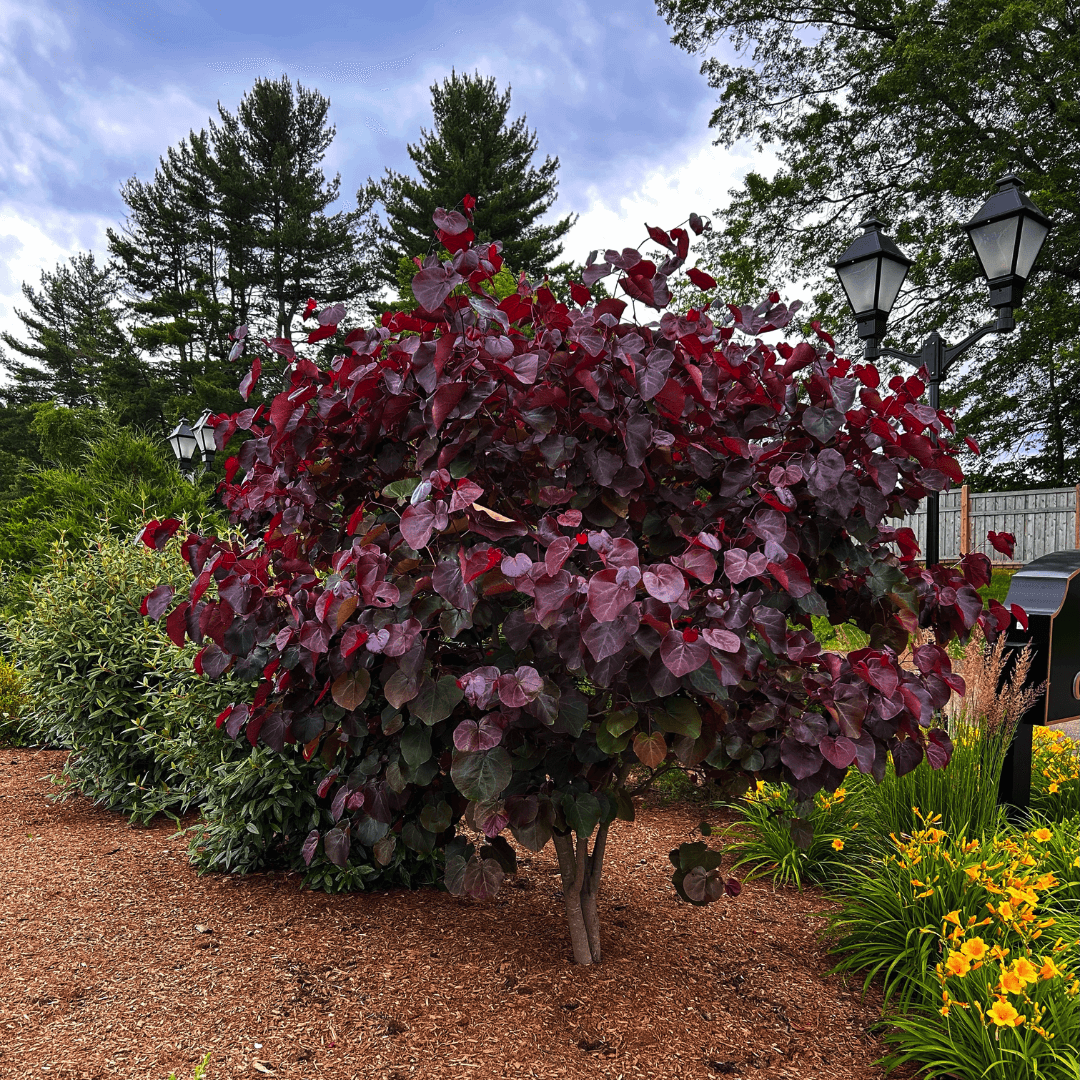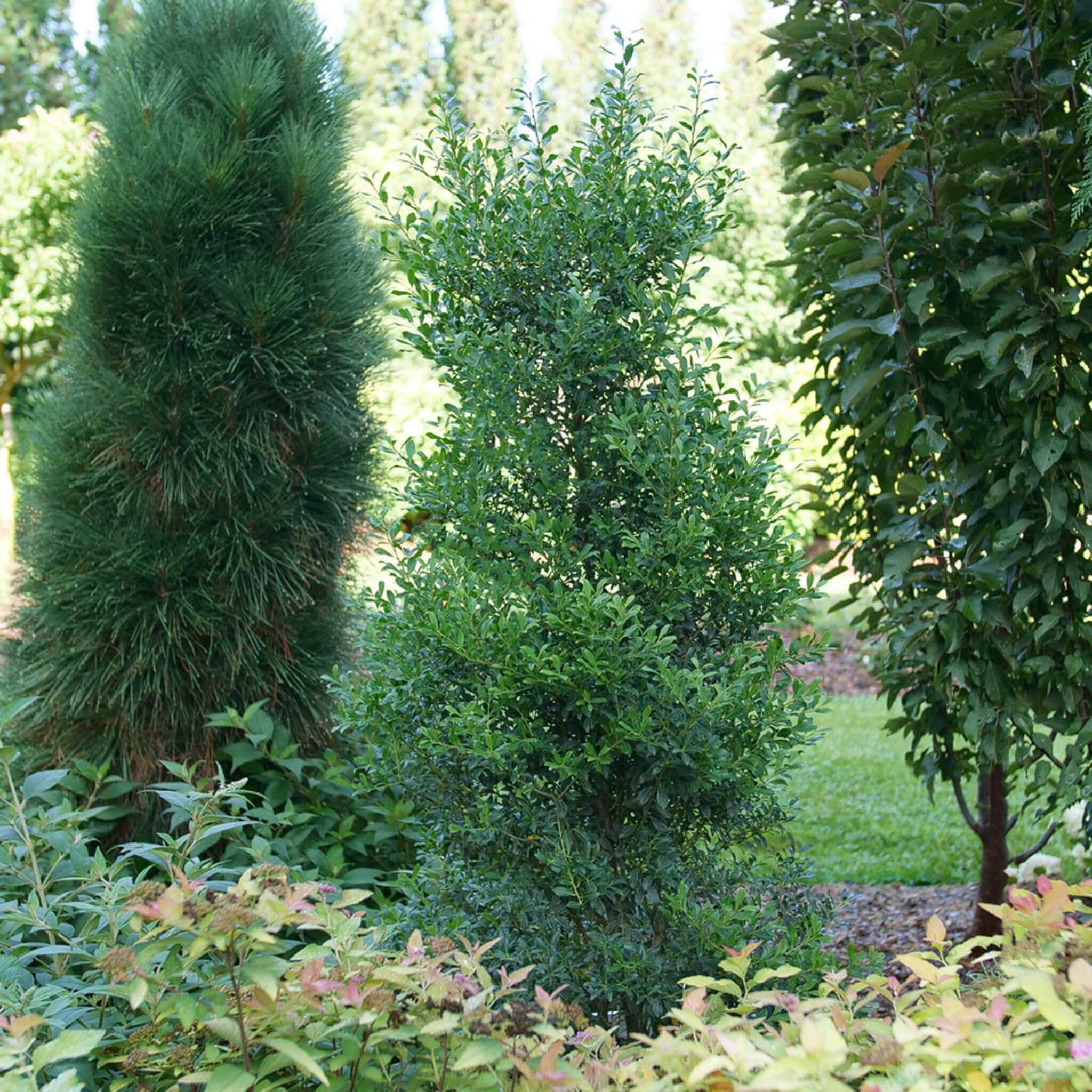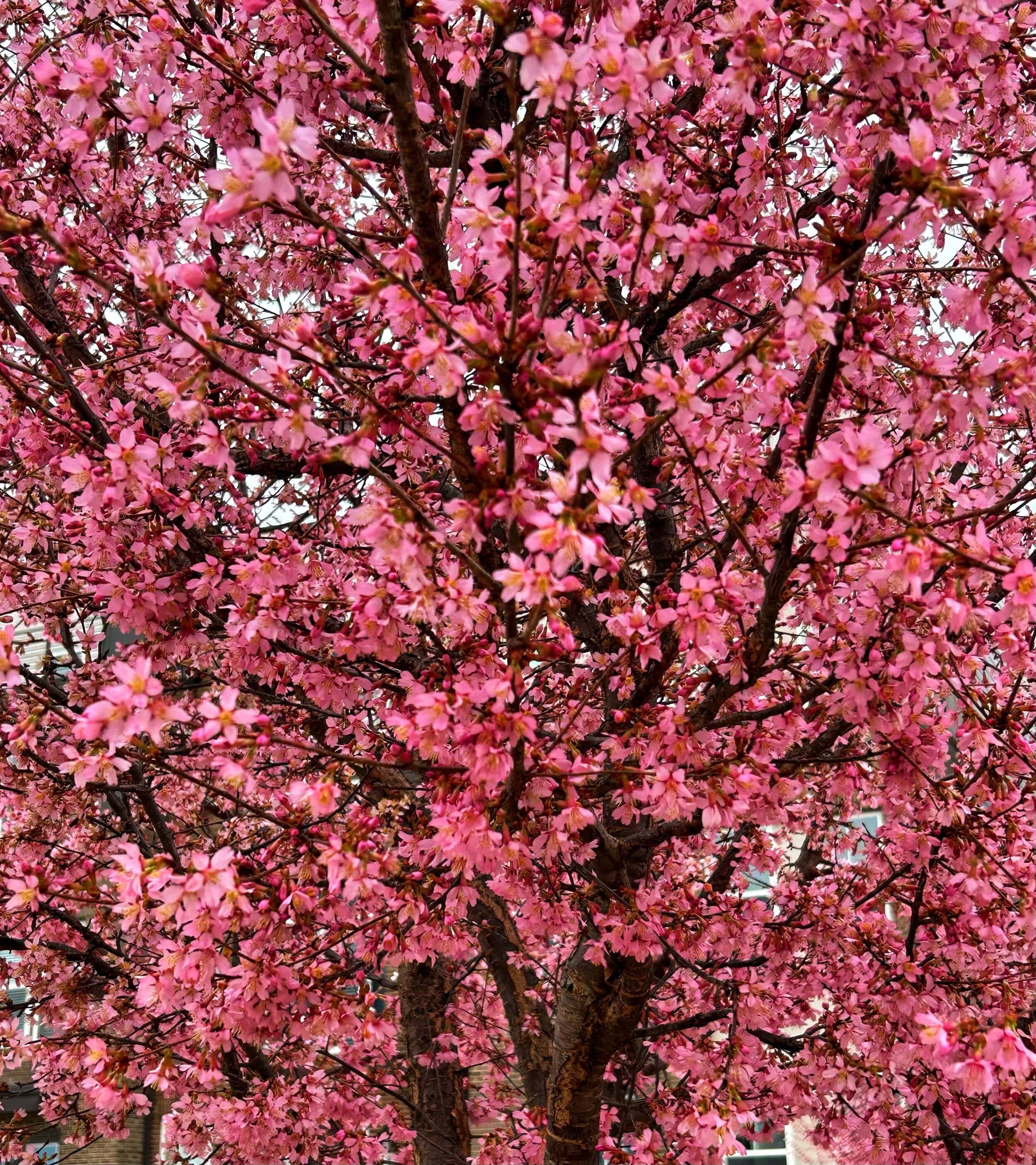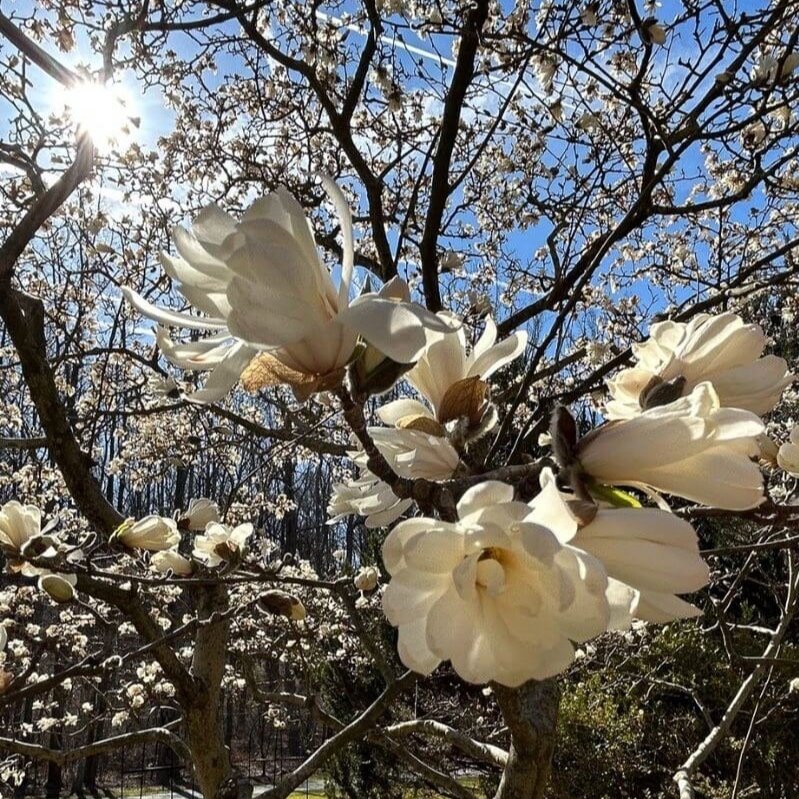White Fringetree: A Small Native Tree With a Big Presence
This easy-care, low-maintenance tree deserves a spot in every garden!
White Fringetree (Chionanthus virginicus) is a small deciduous tree native to the stream banks, swamp edges, and woodlands of the Eastern United States.
In springtime these trees are late to leaf out, but will not disappoint with their soft, white, fringe-like flowers appearing just as leaves reach full size. The flowers attract bees and other pollinators and bring a beautiful soft texture to the spring landscape.
Fringetree grows slowly, as either a multi-stemmed large shrub or a small tree, and reaches a mature size of 12-20 feet high and wide.
Fringetrees are dioecious (male and female flowers occur on separate plants). The male plants have slightly showier flowers, and the female plants, once pollinated, yield fruits in August and September.
Birds eagerly consume these dark blue, olive-like fruits (drupes) when they ripen in late summer. Nurseries rarely label the sex of fringetrees, but luckily both male and female plants are equally beautiful and easy to grow.
Fringetrees have a smooth gray bark that becomes ridged and furrowed with age, and leaves turn greenish-yellow to golden-yellow in autumn.
It is easy to confuse White fringetree (Chionanthus virginicus) with the closely related Chinese fringetree (Chionanthus retusus), so take care to read nursery labels carefully. Chinese fringetree has slightly rounder leaves, flowers before leafing out, and is native to Asia.
White fringe trees can have either a tree-like or shrub-like appearance, depending on how they are pruned and maintained.
White fringetrees have plenty of wildlife value - in addition to attracting pollinators and feeding the birds, many species of sphinx moths use fringetrees to lay their eggs.
These trees prefer deep, moist, fertile acidic soils but are quite adaptable and can tolerate clay soil, drought and even the hot, dry conditions of a parking lot or street.
Fringetrees grow slowly, and like full sun to partial shade. Heaviest flowering and a rounder, denser shape will occur in full sun; trees grown in partial shade will take on a more spreading, open habit.
As with all trees, help a newly planted fringetree get established by providing regular, deep waterings to help with the formation of a healthy root system (see “How to Water a Tree” to learn more).
Fringetrees suffer from few insect pests and diseases. They are occasionally bothered by scale, mites, leaf spot and powdery mildew.
Emerald Ash borer, an invasive pest that has destroyed ash trees throughout the United States, is an emerging problem for fringetree and studies are underway to determine the impact on these native trees.
Fringetrees can be severely damaged by deer, and should not be planted in areas where deer tend to browse.
How to Grow and Care for Fringetree
Planting: Choose a location with partial to full sun in zones 4-9. Fringetrees can tolerate a range of soil types but prefer deep, moist, acidic to neutral soil. Fringetrees are native to stream banks and damp areas, and can tolerate wet locations as long as the soil is not overly saturated. Plant in the spring or fall, giving the tree time to establish roots before extreme temperatures set in.
Watering: Water the fringetree regularly, especially during dry periods, to keep the soil consistently moist. However, they are somewhat drought-tolerant once established.
Mulching: Apply a layer of mulch around the base of the tree to help retain moisture, suppress weeds, and regulate soil temperature. Mulching is especially beneficial during the tree's early years. Keep mulch away from the tree trunk - it should not touch the tree.
Pruning: Fringetrees have a naturally appealing form, and little pruning is needed. In late winter or early spring, before new growth begins, remove any dead or damaged branches and shape the tree as desired.
Fertilizing: Fringetrees typically don't require heavy fertilization. If the soil is nutrient-poor, you can apply a balanced, slow-release fertilizer in early spring, or add a 2-inch layer of compost to the soil underneath the tree’s canopy.
Ongoing care: A tree is an investment! If you are unsure about pruning and fertilizing, or suspect the health of your tree may be compromised by insect pests or diseases, protect your investment and contact an ISA certified arborist.
A white fringetree (Chionanthus virginicus) in full bloom.
Where to Plant White Fringetree
Use fringetree as a single specimen tree or shrub, next to a patio or walkway, or as part of a mixed border.
For bird gardens, plant more than one tree in a grouping or in close proximity to each other, to increase the chances for fruit production.
Fringetrees are a great tree for small backyards, where they can fill up a corner.
Fringetrees are perfect for a native plant garden, or to plant in partial shade along a woodland’s edge.
They are at home alongside a pond or creek, and can thrive in the wetter areas of your yard where they can soak up some moisture. If planting native plants is a priority, take care to read nursery labels and don’t mistakenly grab the Chinese fringetree, Chionanthus retusus.
Fringetrees can also be used as a street tree, underneath power lines, in a parking lot, or next to any hardscaped areas with reflected heat, like a walkway, sidewalk, patio or parking lot.
Fringetrees are a great alternative to Bradford Pear trees!
Planting Companions for White Fringetree
For a naturalistic planting, combine fringetree with Alumroot Coral Bells (Heuchera americana), Indian Pinks (Spigellia marilandica), Christmas ferns (Polystichum acrostichoides), Possumhaw (Viburnum nudum) and a dark purple Bugbane like Hillside Black Beauty (Actaea simplex ‘Hillside Black Beauty’, formerly known as Cimicifuga simplex).
For a more organized, structured look, plant fringetree behind or next to dense, dark, small-leaved evergreen shrubs, which contrast nicely with the soft flowers and large glossy leaves of fringetree. Good choices include the NewGen® Boxwoods (Buxus Newgen® Independence or Buxus Newgen® Freedom), or Compacta Japanese Hollies (Ilex crenata ‘Compacta’). Add dwarf, semi-evergreen abelias like ‘Rose Creek’ (Abelia x grandiflora ‘Rose Creek’) for summer flowers, and a deciduous Serviceberry (Amelanchier species) or Forest Pansy Redbud (Cercis canadensis ‘Forest Pansy’) for contrasting fall color.
Are White Fringetrees Messy?
White fringetrees are relatively tidy, especially when compared to other trees. While they do produce beautiful flowers and fruits, the resulting mess is minimal.
The delicate and fine-textured flower petals are easily carried away by the wind or shredded during subsequent lawn mowing; the berries are swiftly consumed by birds, leaving little cleanup behind.
The strong wood of the white fringetree allows it to withstand wind and storms without shedding an excessive amount of twigs or branches, minimizing the need for cleanup.
Is White Fringetree a Shrub or a Tree?
A white fringetree can take on a more shrub-like or tree-like appearance depending on how it is pruned and maintained:
To Make It More Shrub-Like:
Allow multiple trunks or basal shoots to grow instead of pruning them away.
Avoid training it into a single leader (central trunk).
Minimal pruning will maintain its natural, multi-stemmed habit.
To Make It More Tree-Like:
Select and encourage a single strong trunk by removing lower branches and extra stems.
Prune off basal shoots (suckers) as they appear.
Gradually raise the canopy by trimming lower limbs over time.
Shape it with a more defined crown to give it a classic small tree form.
Find a Tree for Your Landscape:






















Create a Winter Wonderland with This Unique Small Tree